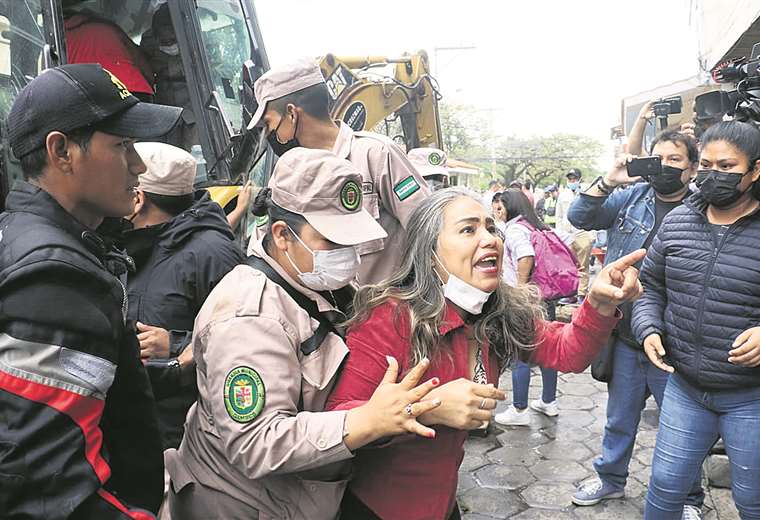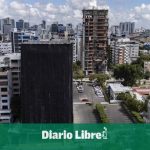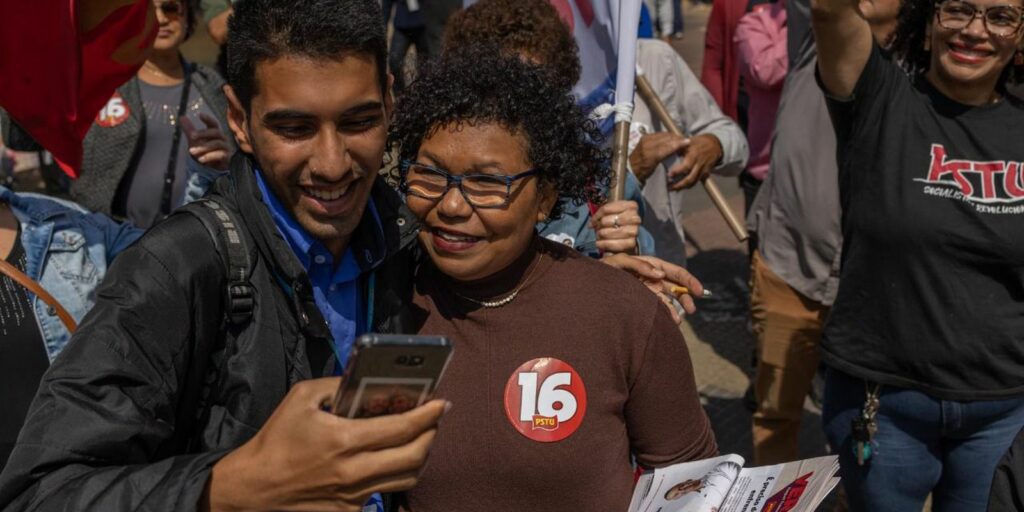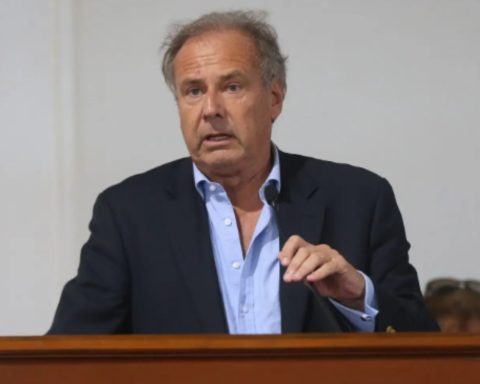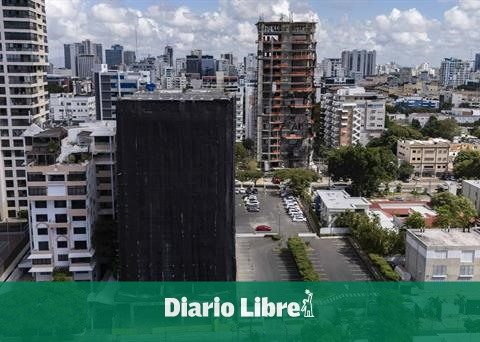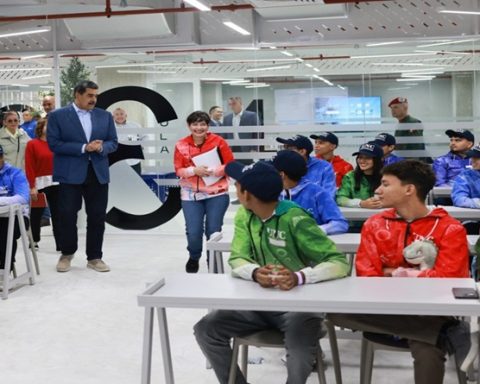September 21, 2022, 4:00 AM
September 21, 2022, 4:00 AM
The change of tiles in the center of Santa Cruz led to violent confrontations between neighbors who reject the project and those who support the works. After the events, the Municipal Government paralyzed the work and Mayor Jhonny Fernández opened work tables with institutions and collegiate entities to find a solution.
The Secretary of Planning for Development, Andrea Daza was in charge of communicating the decision to declare fourth intermediate. “Given the unfortunate political events that occurred today (yesterday) the mayor was in a meeting with different institutions so that in the next few hours a substantive solution can be found,” he stressed.
the city clerk did not specify the time of the pause in the works, but he said that it will be defined in the work tables. The dialogue with the institutions will continue this Wednesday.
For his part, the President of the Municipal Council, Israel Alcócer stressed that the mayor was open to listening to professional associations and institutions. In addition, he stated that he also asked the Executive for a report on the municipal project.
Clashes they left a balance of an injured person and several beaten.
What began as a peaceful protest called on Friday by downtown residents with the premise of defending the city’s historical heritage, this Tuesday came to blows, insults and hair pulling with another side that gathered on Bolívar Street to support the continuity of the works, under the cry of “modernization”.
The neighbors, who indicated that they were representatives of other districts, They mobilized after the call made by the mayor on Monday night, when he called those who support the works to mobilize.
Fernández also warned against applying the law to those who oppose the removal of tiles. “I’m not going to back down. I don’t like a square and I go with four cats and put up a flag and say that no one enters. What is this? That is dictatorship. Here nobody is imposing anything, we have socialized this project for a whole year and there is nothing illegal. This is political. Not just any miscreant is going to come and close the door whenever he feels like it and say I own Santa Cruz,” Fernández said at a meeting with neighborhood councils.
The group that arrived from other areas began to remove the tiles, where the machinery of the company that was awarded the work tried to return to work. Among them was the deputy mayor of District 1, Luis Enrique Arnés, who insisted that the tiles of the blocks around the main square will not be touched, but the streets where it is intended to pave. “It cannot be that they do not want the city center to be modernized as in all countries. The mayor seeks progress. We have come to support it”, he said annoyed at being rebuked by neighbors who reject the project.
It was the moment of greatest tension. There were shouts, shoves and blows between both sides and even the municipal gendarmerie intervened. In the midst of the struggle, a group of women managed to get on a machine and tried to force the driver down. This caused another group to come out in defense of the driver.
among the confusion, former councilor Rosario Schamisseddine, who was among those who reject the municipal project, fell to the ground and another man was kicked, which left him lying on the floor. The former councilor was transferred to a clinic, where she is hospitalized and the affected Miguel Ángel Aramayo formalized a complaint against his aggressor. The police opened the investigation of the incident.
The issue was also discussed at the Municipal Council session, where the opposition bench proposed the stoppage of the works until after September 24 so that dialogue tables can be set up, where the project is informed, including the work of the cooperatives that have to bury cables.
The councilor of the Autonomous Community (CA), José Alberti, suggested that starting on Monday, progress should be made in all technical matters.
The councilor for Democrats, Manuel Saavedra, listed the problems that overwhelm the city center and He criticized the call made by the mayor, because he considers that it generated violence.
Secondly, neighbors and professionals ask to consider the technical aspects that advantage the tile over the flexible pavement that they want to place in the center of Santa Cruz, since it prevents overheating, generates less vibration in the mansions and contains flooding in times of rain.
They assure that when the people of Santa Cruz laid the tile 56 years ago, they not only did so betting on the progress of Santa Cruz, but also took these aspects into account.
Rubén García, from the movement in defense of the tile, asks to consider the environmental impact generated by asphalt, that it is much higher than that of cement (tile) and that this material raises the temperature between 3 and 4 degrees.
In addition, he argues that, with the asphalt, the vehicles print greater speed, which generates more vibration of the ground and causes damage to the mansions.
The architect Alvaro Mier points out that the roughness index of the flexible pavement is low, so it is comfortable to walk on streets with this material, but it deteriorates faster and its maintenance cost is higher.
In addition, it ensures that the tile is easy to repair and its greatest advantage is its durability, which can reach up to 60 years.
The engineer Álvaro Durán indicates, as a result of the experience in times of the Public Works Committee, that the paving of the streets must be maintained, because that level receives the rainwater from the houses and their patios, without causing flooding problems. “The 10 cm thick tile has a support equivalent to 25 cm of base layer (gravel). This index was measured in laboratories in Brazil, from where this technique was imported, when the first tiling work began in 1966. With this previous detail, the 5 cm thick asphalt layer requires a minimum support base layer of 20 cm thick, to equalize the support of the tile”.
It ensures that the paving of some downtown streets and clay areas have a base layer of 10 cm; however, most of the paved roads do not have this base.
He warns that the main problems will arise after removing the ground and will be the same ones that, at the time, faced by those who participated in the paving, which were the continuous bursts of household water and sewage connections, sometimes from the mains, which will delay the work with the consequent damage to the neighborhood and traffic.
